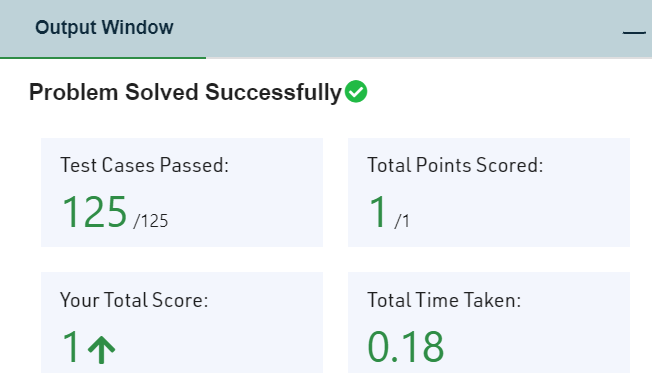Given an array, rotate the array by one position in clock-wise direction.
Below question to rotate an array is taken from GeeksforGeeks platform .
To rotate an array following are steps :
1) Store last element in a variable say x.
2) Shift all elements one position ahead.
3) Replace first element of array with x.
Example 1:
Input:
N = 5
A[] = {1, 2, 3, 4, 5}
Output:
5 1 2 3 4Example 2:
Input:
N = 8
A[] = {9, 8, 7, 6, 4, 2, 1, 3}
Output:
3 9 8 7 6 4 2 1
Your Task:
You don't need to read input or print anything. Your task is to complete the function rotate() which takes the array A[] and its size N as inputs and modify the array in place.
Expected Time Complexity: O(N)
Expected Auxiliary Space: O(1)
Constraints:
1<=N<=105
0<=a[i]<=105Solution in Java
//{ Driver Code Starts
//Initial Template for Java
import java.util.*;
import java.lang.*;
import java.io.*;
class Technoname {
public static void main(String[] args) throws IOException
{
BufferedReader br =
new BufferedReader(new InputStreamReader(System.in));
int t =
Integer.parseInt(br.readLine().trim()); // Inputting the testcases
while(t-->0)
{
int n = Integer.parseInt(br.readLine().trim());
int a[] = new int[n];
// long getAnswer[] = new long[(int)(n)];
String inputLine[] = br.readLine().trim().split(" ");
for (int i = 0; i < n; i++) {
a[i] = Integer.parseInt(inputLine[i]);
}
Compute obj = new Compute();
obj.rotate(a, n);
StringBuilder output = new StringBuilder();
for(int i=0;i<n;i++)
output.append(a[i]+" ");
System.out.println(output);
}
}
}
// } Driver Code Ends
//User function Template for Java
class Compute {
public void rotate(int a[], int n)
{
int x=a[n-1];
for(int i=n-1;i>0;i--)
{
a[i]=a[i-1];
}
a[0]=x;
}
}Time Complexity: O(n), as we need to iterate through all the elements. Where n is the number of elements in the array.
Auxiliary Space: O(1), as we are using constant space.
Thank you for reading this article so far, if you know some other way to write this program then you can leave a comment here or mail us at technonamecontact@gmail.com, So anyone can a get chance to publish their code on our website. As a result, one can improve knowledge and spread it to others
Please check most asked programming questions of strings with examples by clicking here, after that you might get a deep knowledge about string operations, in short, it will be helpful in clearing the interview.
For understanding the most important concept of data structures in an easy way you can check this article on our website.
Thanks for reading this article so far. If you like this article, then please share it with your friends and colleagues. If you have any questions or feedback, then please drop a note.
You can also follow us on Twitter for daily updates.

